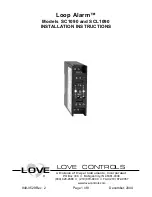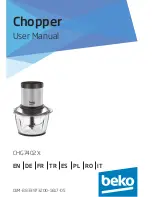
Waveform and List Format
R&S
®
SGT100A
513
User Manual 1176.8674.02 ─ 07
Figure 12-1: Marker element in 4-bit binary format bit order
For standard waveforms, the
MARKER LIST x
tags are a more compact way to define
markers, but in principle this
CONTROL LIST WIDTH4
format can also be used
instead of the
MARKER LIST x
tags.
For multi segment waveforms, this
CONTROL LIST WIDTH4
format is required for
marker definition. The binary marker streams of the individual segments are directly
concatenated (without any gap) to one collectively marker stream.
Setting parameters:
Length
Defines the number of bytes in the
CONTROL LIST WIDTH4
tag
in ASCII Format and is calculated as follows:
Length = Size of "#" (1 byte) + Number of marker elements m
x
*
(4 bit) / (8 bits/byte)
The value is rounded up for byte alignment.
mx
Marker element in 4-bit binary format.
Example:
{CONTROL LIST WIDTH4-51: #m
0
m
1
…m
x
…m
99
}
100 marker elements, each marker element with 4 bits
Usage:
Setting only
12.2 How to Manually Create a Waveform Using Tag File
Format
The provided example uses a sine function in the I channel and a cosine function in the
Q channel, each with 20 points. The example uses a short program written in the pro-
gramming language C to calculate the sine and cosine values (see
gram for creating a waveform file"
on page 516). They are stored in the file
SICO.txt
. The decimal values in
SICO.txt
are normalized such that they are
between –1.0 and +1.0. The data is converted into binary format. The appropriate man-
datory tags are added and the data is packed into the
WAVEFORM
tag. As result, the
waveform file
SICO.wv
is generated.
This example follows the general principle of creating of a waveform manually, using
the tag file format. The
illustrates this general workflow.
How to Manually Create a Waveform Using Tag File Format
















































